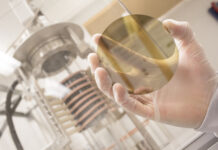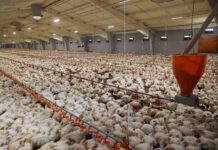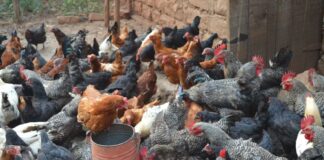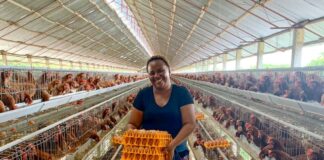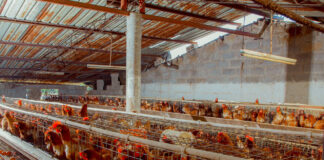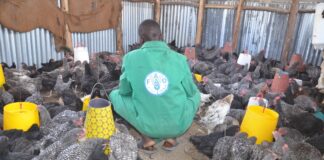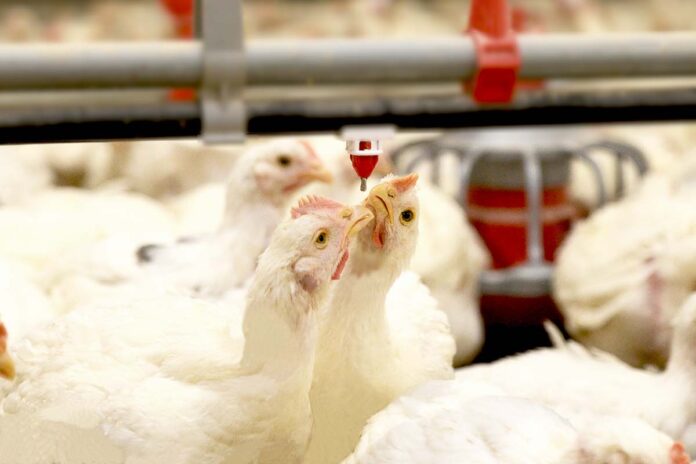
Clean water is essential for poultry—not just as a source of hydration but as a vital part of nutrition, digestion, and temperature regulation. In Finland, where groundwater quality is among the best in the world, poultry producers still take extra steps to ensure that the water birds drink is safe, clean, and delivered efficiently. One of the most important practices is thoroughly cleaning and disinfecting waterlines between broiler batches.
Why water hygiene matters
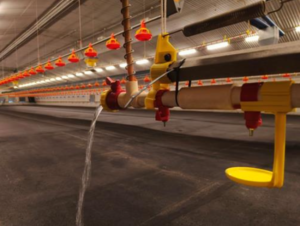 Even in countries with high-quality water, such as Finland, the water inside poultry houses can become contaminated over time. This is especially true during the chick stage, when warm house temperatures and low water flow rates create ideal conditions for biofilm formation inside pipes. This slimy layer, rich in polysaccharides, quickly builds up and provides a breeding ground for bacteria—including harmful types like Clostridia.
Even in countries with high-quality water, such as Finland, the water inside poultry houses can become contaminated over time. This is especially true during the chick stage, when warm house temperatures and low water flow rates create ideal conditions for biofilm formation inside pipes. This slimy layer, rich in polysaccharides, quickly builds up and provides a breeding ground for bacteria—including harmful types like Clostridia.
If left untreated, biofilm:
-
Reduces water quality
-
Slows water flow—especially at the end of lines
-
Clogs nipples, reducing water intake
-
Increases the risk of disease
All of this negatively affects bird growth and welfare.
A simple but effective solution
To combat this issue, Finnish broiler producers follow a strict hygiene protocol between 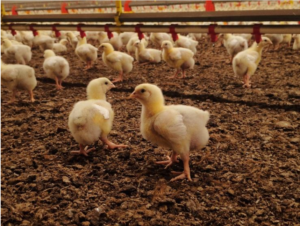 batches: cleaning and disinfecting the entire waterline system, including pipes and nipple drinkers. The process removes built-up slime and prevents bacterial growth. Specialized cleaning agents are used that are both effective and safe for birds.
batches: cleaning and disinfecting the entire waterline system, including pipes and nipple drinkers. The process removes built-up slime and prevents bacterial growth. Specialized cleaning agents are used that are both effective and safe for birds.
This practice ensures:
-
Better water quality
-
Improved flow rates and water intake
-
Lower bacterial load
-
Reduced disease pressure
Importantly, waterline hygiene supports Finland’s outstanding track record in antibiotic-free broiler production. Broilers have not been routinely medicated in the country since 2009.
Water quality goes beyond hygiene
While cleaning is essential, water quality also depends on its chemical composition. Important parameters that should be monitored include:
-
Nitrate content
-
Acidity (pH)
-
Water hardness
-
Concentration of key minerals
These factors can influence water palatability, intake, and even the performance of the waterline system itself. Regular analysis of water—especially from on-farm wells—is recommended at least every three years under Finnish law.
Water: a critical nutrient
Water is not just a drink—it is essential for every aspect of a broiler’s physiology. A one-week-old chick is made up of around 85% water, and water plays a role in:
-
Digesting and transporting nutrients
-
Regulating body temperature
-
Cellular nutrition and waste elimination
When water quality or availability is compromised, bird health and productivity suffer.
Long-term benefits for the farm
Though invisible, waterline cleanliness has visible effects on bird performance and welfare. With minimal cost and effort, implementing a regular cleaning protocol between batches leads to:
-
Better growth performance
-
Fewer health issues
-
Lower antibiotic use
-
Improved biosecurity
Source:
BroilerNet Factsheet S2-C1-2 – Water Hygiene (Washing Waterlines, Between Batches)
Author: Suomen Siipikarjaliitto ry / The Finnish Poultry Association
Funded by the European Union’s Horizon 2020 Programme (Grant No. 101060979)


